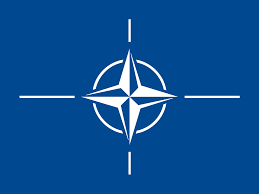
The proliferation of inexpensive, highly capable Unmanned Aerial Systems (UAS) has fundamentally altered the character of modern warfare. Recent conflicts have demonstrated that the threat has evolved beyond single, remotely-piloted aircraft to encompass coordinated, autonomous swarms capable of overwhelming conventional air defense systems. This paradigm shift has created an urgent operational need for a new class of defensive capability: integrated, mobile counter-UAS (C-UAS) architectures designed to protect maneuvering forces on a dynamic battlefield. No longer a niche concern, defending against drone swarms has become a central challenge for military planners, driving significant investment and innovation across the global defense sector.
The development of these mobile C-UAS solutions is a direct response to the limitations of legacy systems. Traditional air defenses, optimized to engage large, fast-moving targets like fighter jets and cruise missiles, are often ill-suited to detect, track, and neutralize the small, slow, low-flying drones that constitute a swarm. Furthermore, the economic calculus is unsustainable; using a multi-million-dollar interceptor missile to destroy a commercial-grade drone costing a few thousand dollars presents a clear case of asymmetric cost imposition. A comprehensive architecture, rather than a single silver-bullet system, is now viewed as the only viable path forward.
From Single Threats to Coordinated Swarms: The Drone Evolution
The tactical use of UAS has progressed rapidly over the past two decades. Initially dominated by large, high-altitude platforms for intelligence, surveillance, and reconnaissance (ISR) and precision strikes, the landscape is now saturated with smaller, more accessible systems. The weaponization of commercial off-the-shelf drones by state and non-state actors has democratized air power, giving even poorly-funded groups the ability to conduct reconnaissance and deliver explosive payloads with surprising accuracy. The most recent and alarming development is the operationalization of drone swarms. These are not simply multiple drones operating in the same airspace but interconnected groups that use artificial intelligence and cooperative algorithms to execute complex missions, such as saturating the defenses of a high-value target. This coordinated behavior makes them resilient to traditional point-defense systems, as disabling one or two drones does not compromise the mission of the overall swarm. This evolution has rendered static, fixed-site C-UAS installations insufficient for protecting forces on the move, necessitating a mobile, adaptable shield.
Beyond Point Defense: Crafting a Layered, Mobile Shield
A modern mobile C-UAS architecture is a system-of-systems, integrating multiple capabilities to provide a layered defense. The core function is built upon a ‘detect, track, identify, and defeat’ methodology. Detection relies on a suite of fused sensors, including compact doppler radars, electro-optical/infrared (EO/IR) cameras, and radio frequency (RF) detectors that can identify the control links of enemy drones. Once a potential threat is detected, advanced processing, often augmented by machine learning algorithms, helps to track its trajectory and identify it as hostile, distinguishing it from friendly assets or even wildlife. The defeat mechanism is itself multi-layered, providing commanders with a range of options tailored to the specific threat and rules of engagement. These include ‘soft kill’ electronic warfare systems that jam a drone’s command-and-control or GPS links, and ‘hard kill’ effectors. Kinetic hard-kill options range from 30mm cannons firing programmable airburst munitions to specialized, small-form-factor interceptor missiles. Increasingly, directed energy weapons, such as high-energy lasers (HEL) and high-power microwave (HPM) systems, are being integrated. These offer the promise of a deep magazine and an extremely low cost-per-shot, directly addressing the economic asymmetry posed by cheap drones.
Recalibrating the Battlefield: Strategic and Industrial Ramifications
The strategic implications of this technological race are profound. Nations that successfully field effective, mobile C-UAS architectures will grant their ground forces renewed freedom of maneuver, while those that fail to adapt will find their personnel and equipment exceptionally vulnerable. This capability gap is driving a global effort among leading military powers and defense industrial bases. The United States Army, for instance, is actively developing systems like the Mobile-Low, Slow, Small Unmanned Aircraft Integrated Defeat System (M-LIDS) and the Indirect Fire Protection Capability (IFPC). Similarly, nations like Israel have adapted systems such as the Iron Dome to counter UAS threats, while companies across Europe and Asia are marketing a wide array of competing solutions. Key actors in the defense industry, from established primes like Raytheon and Northrop Grumman to agile startups, are competing to provide the most integrated and effective solutions. The market is characterized by a push towards open-architecture systems that allow for the rapid integration of new sensors and effectors as technology evolves.
Conclusion: The New Frontier of Force Protection
The era of assuming air superiority will protect ground forces from attack is over. The drone swarm represents a persistent and adaptable threat that requires an equally dynamic defense. The development and deployment of mobile C-UAS architectures are no longer aspirational but an operational necessity. The future of this domain will likely be defined by greater autonomy on both sides of the equation, with AI-driven swarms being countered by AI-enabled defensive networks. As these systems are fielded, they will reshape tactical doctrines and force structures. The ability to shield maneuvering brigades from ubiquitous aerial threats will be a key determinant of success on the battlefields of the 21st century, making the ongoing innovation in mobile C-UAS a critical area of focus for global defense establishments.
Source


